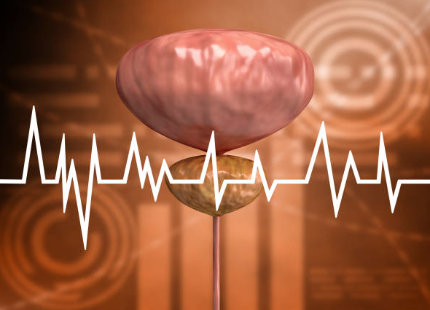Prostate Health Index (PHI) – The Test Your Prostate Needs

The Prostate Health Index (PHI):
Finally, a Smarter Way to Assess Your Prostate Cancer Risk
Hey there, guys. If you’re over 40, I’m sure you’ve crossed paths with the dreaded PSA test – that little blood test that hints at potential prostate problems. It’s a lifesaver, but it can also lead to some pretty confusing, even anxiety-inducing results. That’s where the Prostate Health Index (PHI) comes in. Think of it as the smarter, upgraded version of the PSA test. Been getting mixed signals about your prostate health? Let’s unpack the PHI and see if it’s the right next step for you.
PSA: The Good, The Bad…and the Frustrating
Let’s be real, the PSA test isn’t perfect. Sure, it detects elevated levels of Prostate-Specific Antigen (PSA), a possible indicator of prostate cancer. But here’s the catch: other things, like an enlarged prostate or prostatitis, can also bump up those PSA numbers. And here’s what makes it worse…some prostate cancers show normal PSA levels! Talk about a head-scratcher.
The Prostate Health Index (PHI): Less Guesswork, More Confidence
Imagine a prostate test that goes deeper than just PSA. That’s exactly what the prostate health index (PHI) does. It’s not just one test, rather a clever formula (the phi prostate health index formula) that combines:
- Total PSA: The overall level of PSA in your blood
- Free PSA: The portion of PSA floating freely in your blood
- p2PSA: A specific type of free PSA that’s more likely to be associated with cancer
How Does the Prostate Health Index Work?
Those three measurements get plugged into the prostate health index formula, generating a phi score prostate. Think of this score as your personalized prostate cancer risk indicator – the higher the number, the higher the likelihood of a positive biopsy (meaning they find cancer).
What Do My PHI Test Results Really Mean?
Your doctor won’t just drop a number on you. They use your phi prostate test results alongside other factors (like your age and family history) to give you a more precise idea of what’s going on down there.
Here’s a general idea of what those phi score prostate cancer ranges might indicate:
- Low PHI Score: Lower chance you’ve got prostate cancer
- High PHI Score: A prostate biopsy might be the smart thing to settle the matter
Dude, I’m 40-Something – Is the PHI Test Right for Me?
The PHI shines brightest if you fall into one of these categories:
- PSA in the ‘Gray Zone’: Your PSA level is in that 4-10 ng/mL range, leaving you in decision limbo.
- Prior Negative Biopsy: You had a biopsy that was clear, but your PSA still has everyone scratching their heads.
Say Yes to the PHI, Say ‘Maybe Not’ to Unnecessary Biopsies
One of the coolest things about the prostate health index (PHI) is it might help you avoid unnecessary biopsies. Remember how lots of guys with elevated PSA get biopsied even though they might not have cancer? The PHI can change the game – a low score could spare you the procedure and a bunch of worry.
Real Stories: When the PHI Made All the Difference
Don’t just take my word for it. Picture this: John, 55 years old, slightly high PSA, and a family history of prostate cancer. A routine biopsy came back negative, leaving everyone unsure. His doctor ordered a PHI test, and it came back low. Huge sense of relief!
Getting the Prostate Health Index Test: What to Expect
Ready to try the prostate health index test? Here’s the lowdown:
- Blood Test: It’s just a simple blood draw, similar to getting your PSA checked.
- Availability: Plenty of labs offer it, including big names like prostate health index LabCorp, prostate health index mayo clinic, and prostate health index quest diagnostics.
- The Wait: Results usually come back pretty quickly
5 FAQs about Prostate Health Index (PHI):

FAQ 1: My PSA test came back in that ‘gray area’ – can the PHI help me?
Absolutely! The PHI test is specifically designed to help men whose PSA falls in that uncertain 4-10 ng/mL range. It can give you and your doctor a much clearer idea of whether a biopsy is really necessary.
FAQ 2: I had a prostate biopsy that was negative, but my PSA is still bothering me. Could the PHI be useful?
Yes, the PHI can be really valuable in this situation. If your biopsy was negative but your PSA levels remain concerning, the PHI can offer additional insights and potentially help you avoid further biopsies if your risk is low.
FAQ 3: Is the PHI test as accurate as a biopsy?
The PHI isn’t meant to replace a biopsy but rather to make the decision to have a biopsy a better-informed one. It’s a powerful tool that, when used alongside other factors, can improve the accuracy of prostate cancer detection.
FAQ 4: I’m worried about prostate cancer. If I get a PHI test, does a high score mean I definitely have it?
A high PHI score does increase the likelihood of finding cancer on a biopsy, but it’s not a guarantee. Your doctor will look at your score in combination with other factors like your age, family history, and overall health to make the best prostate health recommendations.
FAQ 5: How do I get a PHI test?
Talk to your doctor about the Prostate Health Index. It’s a blood test, so it’s easy and non-invasive. Many major labs offer PHI testing, so your doctor should be able to order it for you.
Disclaimer:
The information provided in this article is intended for general knowledge and informational purposes only, and does not constitute medical advice. It is essential to consult a qualified healthcare professional for diagnosis and treatment of any health condition. Never disregard professional medical advice or delay in seeking it because of something you have read in this article.

